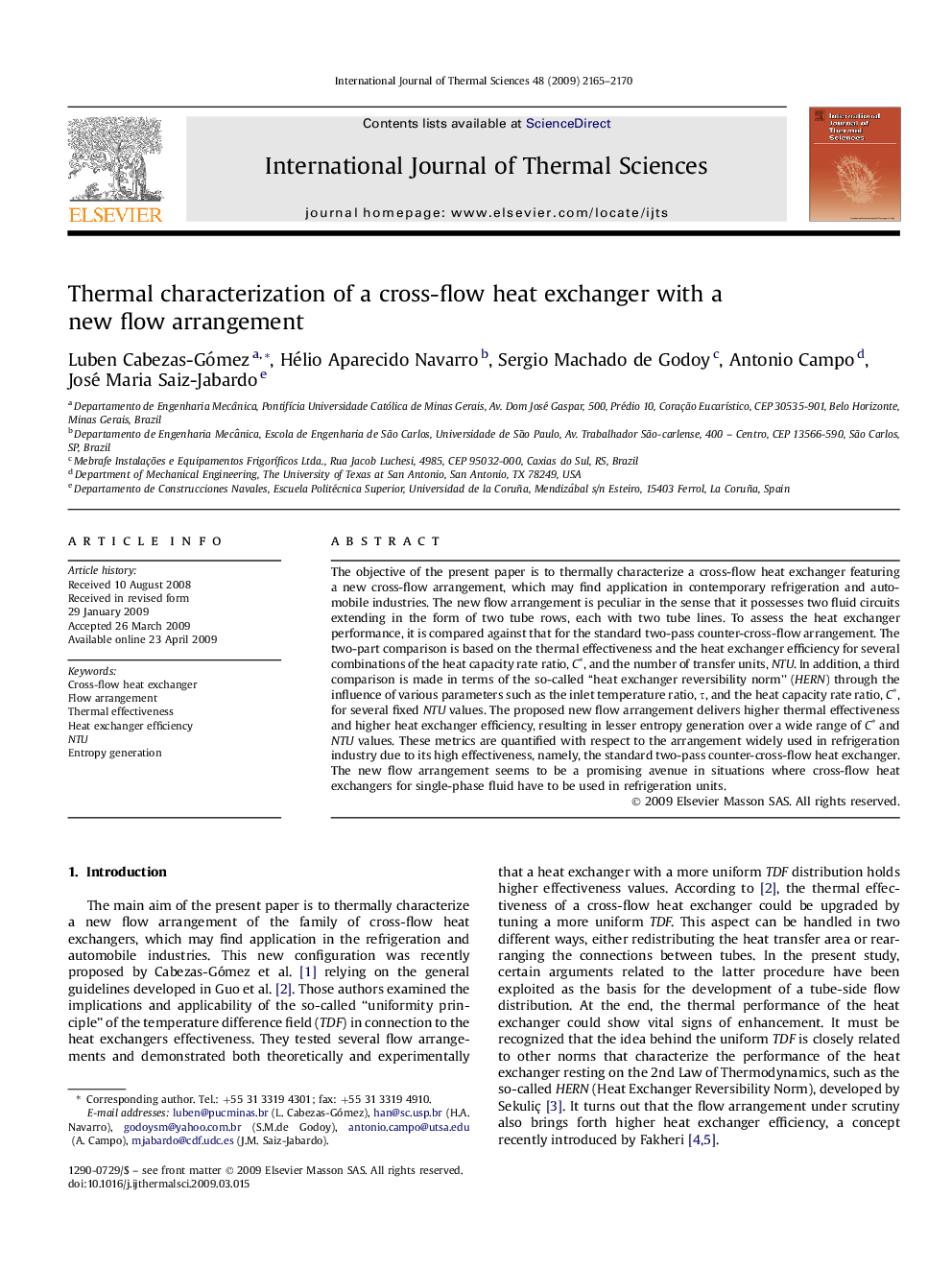| کد مقاله | کد نشریه | سال انتشار | مقاله انگلیسی | نسخه تمام متن |
|---|---|---|---|---|
| 669001 | 1458797 | 2009 | 6 صفحه PDF | دانلود رایگان |

The objective of the present paper is to thermally characterize a cross-flow heat exchanger featuring a new cross-flow arrangement, which may find application in contemporary refrigeration and automobile industries. The new flow arrangement is peculiar in the sense that it possesses two fluid circuits extending in the form of two tube rows, each with two tube lines. To assess the heat exchanger performance, it is compared against that for the standard two-pass counter-cross-flow arrangement. The two-part comparison is based on the thermal effectiveness and the heat exchanger efficiency for several combinations of the heat capacity rate ratio, C∗, and the number of transfer units, NTU. In addition, a third comparison is made in terms of the so-called “heat exchanger reversibility norm” (HERN) through the influence of various parameters such as the inlet temperature ratio, τ, and the heat capacity rate ratio, C∗, for several fixed NTU values. The proposed new flow arrangement delivers higher thermal effectiveness and higher heat exchanger efficiency, resulting in lesser entropy generation over a wide range of C∗ and NTU values. These metrics are quantified with respect to the arrangement widely used in refrigeration industry due to its high effectiveness, namely, the standard two-pass counter-cross-flow heat exchanger. The new flow arrangement seems to be a promising avenue in situations where cross-flow heat exchangers for single-phase fluid have to be used in refrigeration units.
Journal: International Journal of Thermal Sciences - Volume 48, Issue 11, November 2009, Pages 2165–2170